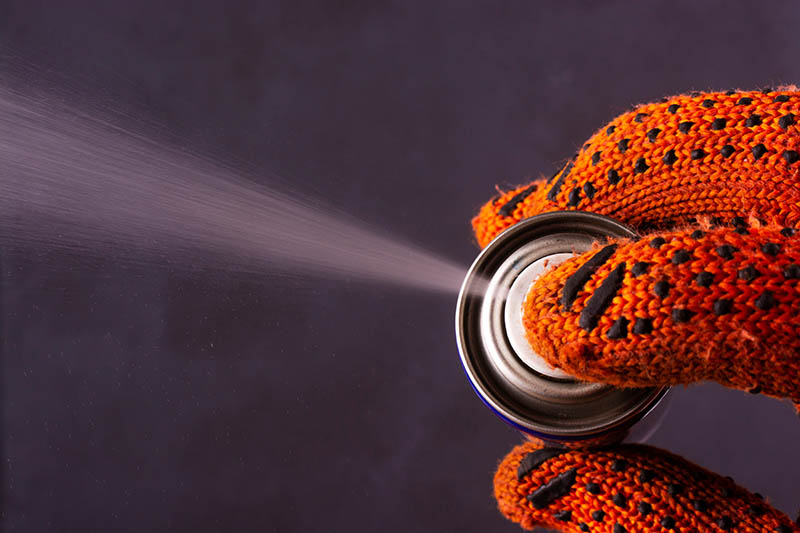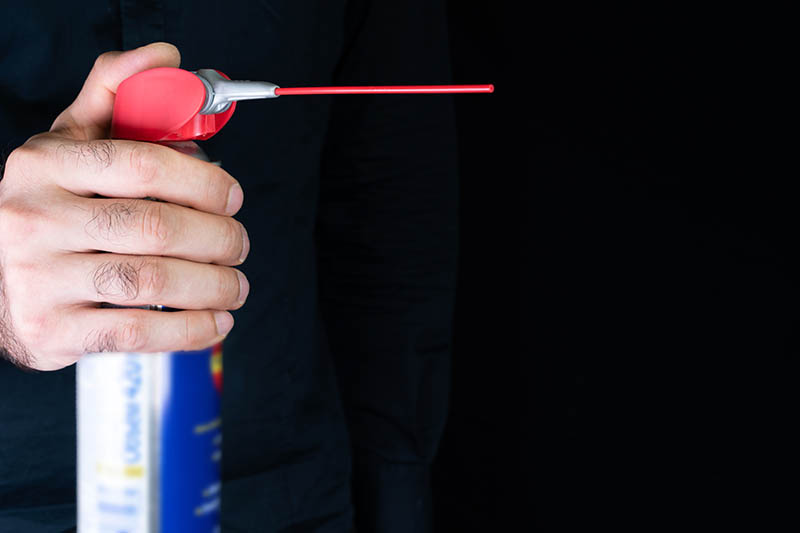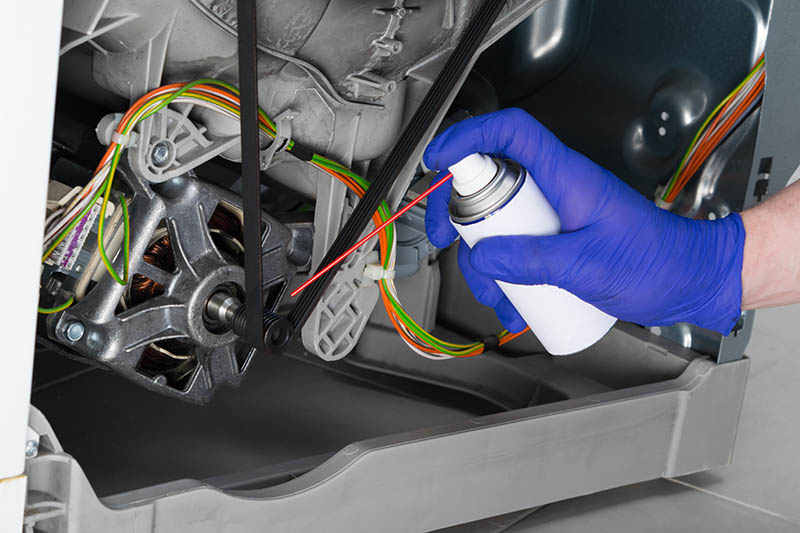Is WD-40 Flammable? What Happens if It Touches Open Flame?
-
Ed Malaker
- Last updated:

WD-40 is a popular item in many homes with almost as many uses as duct tape. With people spraying it on everything from their door hinges to their elbows, many wonder if it’s flammable. You might be surprised to find out that it could be flammable. Keep reading as we explain when WD-40 can become a fire hazard, so you can keep you and your family safe.
What Is WD-40?
WD-40 is a water displacer, which is what the “WD” abbreviates. The 40 signifies that it was the 40th attempt to create the formula. The WD-40 Company invented it in the 1950s to protect missiles from corrosion and rust. However, it quickly realized the product’s many other uses and packaged it in an aerosol can to sell to the general public. It has become a household product despite its ingredients being a closely guarded trade secret.

Is WD-40 Flammable?
WD-40 is extremely dangerous and flammable while you are spraying it in the air. Flammable ingredients like butane act as an aerosol to push the WD-40 out of the can. It can easily catch fire as it travels through the air, and since the ingredients of WD-40 are combustible, it can create an explosive situation, so it is important to never spray WD-40 anywhere near an open flame.
The ingredients of WD-40 are combustible but not flammable. Flammable liquids will ignite at temperatures starting at 199.4° F, while combustible liquids will require a higher temperature. The ingredients in WD-40 do not completely evaporate, so once it’s dry, it can start to smolder and smoke if you expose it to a flame. It will burn for quite a while at a low temperature. It won’t likely cause damage, but it will destroy the WD-40, and you will need to reapply it.
What Happens When WD-40 Ignites?
When WD-40 ignites, it creates gases, including CO2 and water vapor. It’s also petroleum-based, so it produces toxic hydrocarbons that react with nitrogen. You should avoid inhaling WD-40 fumes, whether they are from fire or not. In addition, some people report experiencing nasal and respiratory irritation after inhaling it, and headache, nausea, and even vertigo can occur.

Is Non-aerosol WD-40 Still Flammable?
Though not nearly as dangerous as the aerosol version, liquid WD-40 still contains many flammable ingredients that can quickly catch fire near an open flame. These can even create an explosive area when they evaporate if there isn’t adequate ventilation for the gases to escape. Once dry, only 20% of the WD-40 remains, and as a combustible material, it will burn slowly at a low temperature.
Uses for WD-40
- Lubricate your shovel, especially when working with clay, to help the dirt slide right off.
- WD-40 is a fantastic tile cleaner that removes dirt, grime, makeup, nail polish, and paint.
- It’s a fantastic stainless steel cleaner.
- Use WD-40 to remove stickers and tape residue.
- It will help remove rust from your tools.
- WD-40 will help get gum out of carpet, fabric, and even hair.

When Should I Avoid Using WD-40?
- While many people like to use WD-40 to stop their door hinges from squeaking, experts point out that doing so will attract dust and dirt that will become messy over time.
- Never use it on a bike chain because it will quickly remove the oil and damage it.
- Never spray WD-40 on plastic, as it can cause it to break down, resulting in visible damage and discoloring.
- Although it’s a popular urban legend, the WD-40 Company and many health officials recommend not using it to treat arthritis. You should never spray it on any part of the body, as it could result in skin irritation.
 Summary
Summary
Unfortunately, despite its many uses around the home, WD-40 is extremely flammable and might even result in an explosive situation if you spray it near an open flame. Aerosol ingredients that help propel the solution out of the can are flammable, and the ingredients that make up WD-40 are combustible. Even dry, the WD-40 can ignite in a slow-burning low-temperature flame, so it’s always best to use extreme caution when working with this helpful product.
Featured Image Credit: Yevhenii Orlov, Shutterstock
Contents
